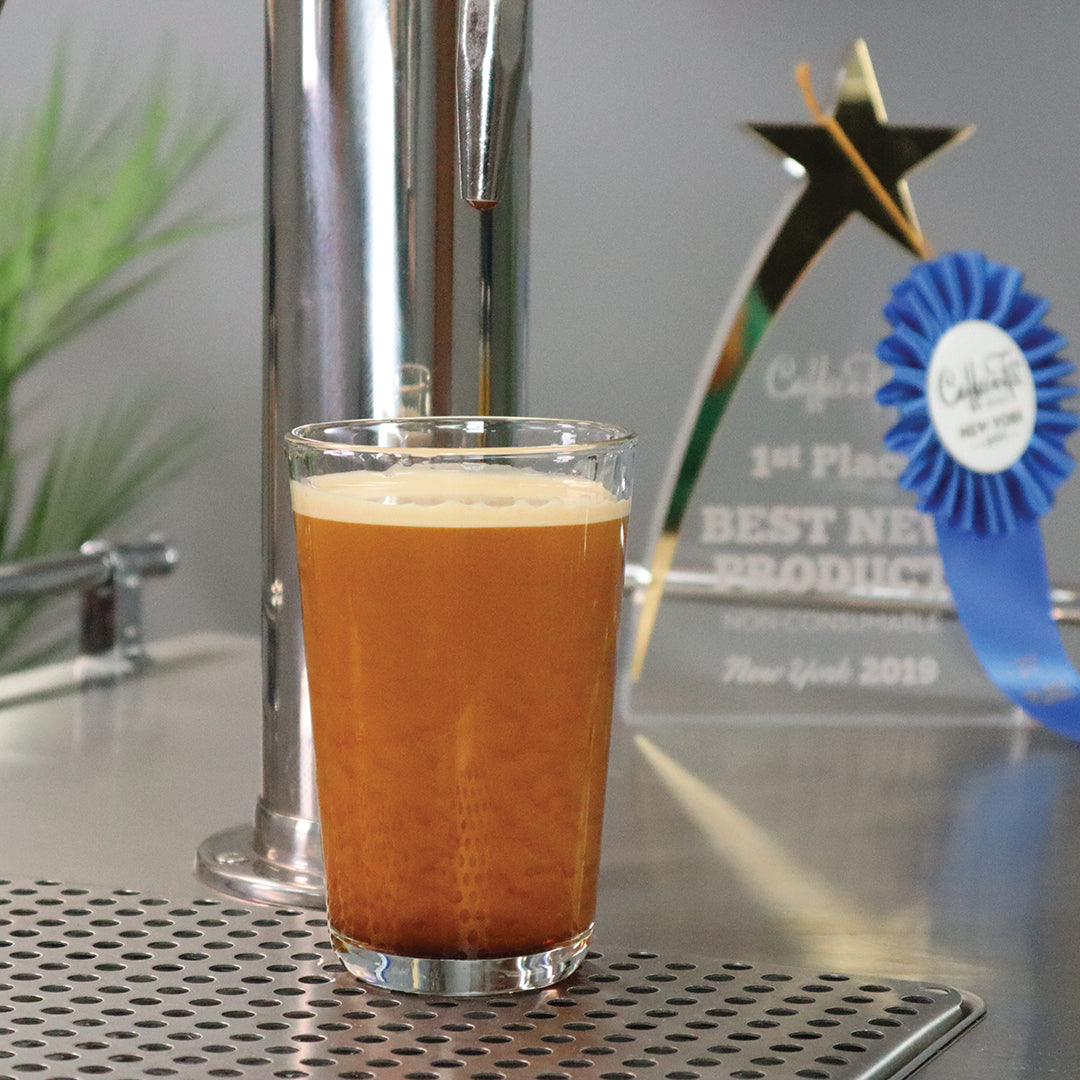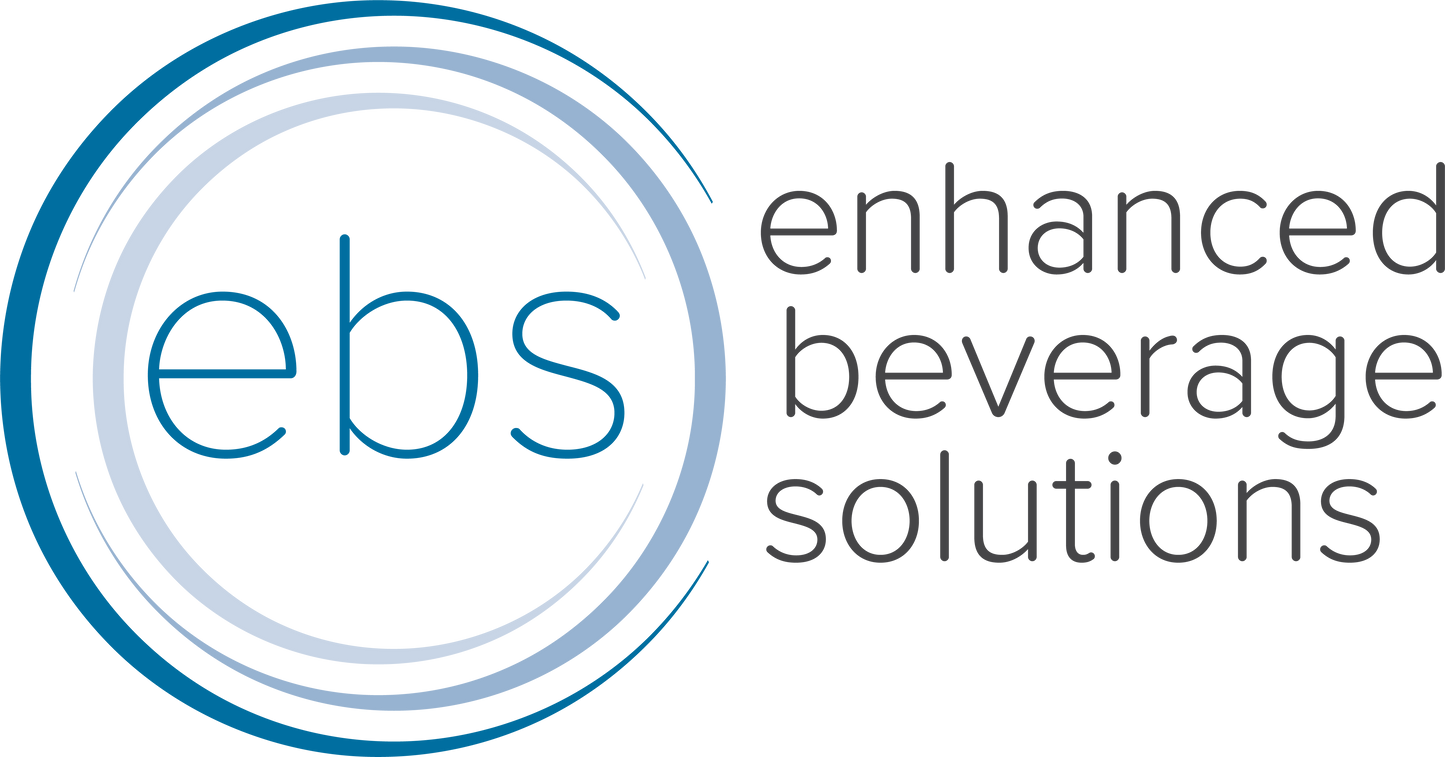
These are all questions you have likely asked a fellow coffee professional or have personally been asked by a coffee consumer. But what about these questions:
How long does a quality cascade last? What glass showcases a nitro pour the best? How much head should be on a nitro infused drink? How do I control the amount of nitrogen in my beverage?
As the sudden, rapid growth of cold brew and nitro cold brew took specialty coffee by storm, the industry has struggled to identify a standard for these questions. As a result, beverages on the cold side of specialty coffee see various inconsistencies both between shops, but also on a day-to-day basis within the same cafe.
So what qualifies the perfect nitro cold brew?
The perfect nitro cold brew is measured on two basic components: a visual profile and a taste profile. The key is to strike a balance of a smooth, pleasing flavor profile and a stunning visual. Contrary to traditional cold brew, a nitro cold brew should be experienced as slightly sweeter and less bitter, while having a creamy taste and a velvety mouthfeel. When served, the drink will cascade with a rich, golden color and a will have a dense head of microfoam.
The length of that cascade, the amount of head, the glass it’s served in, and the purity of the nitrogen are all factors that can make or break the overall quality of the beverage and the impression it leaves on customers. In order to empower customers to feel confident in their order, it is important to identify what a cafe should look for in their own pour.
Below is a list of criteria to take to the bar when assessing your own nitro pour:
VISUAL PROFILE
Cascade
The cascade is your hook. This mesmerizing effect is what entices customers to branch out and try nitro cold brew. The longer you can sustain a cascade, the longer your “awe” factor lasts.
The cascade is a visual representation of the nitrogen bubbles rising and the coffee circling the glass with it. The better infusion you have, the longer the bubbles will take to rise. You should be able to see this waterfall effect in your glass for at least two minutes.
Ratio of Head
The head of a nitro cold brew is the layer of firm foam that sits on top of the beverage. This is made from the rising bubbles of nitrogen gas, and is a key factor in the aromatics of your drink. A quality head-to-beverage ratio provides enough head to get the creamy, frothy micro-foam experience, while still allowing the customer to access the true liquid of the beverage upon first sip. Generally, recommendation is .5″ – 1″ of head on your beverage, depending on the glass. The head of your nitro cold brew should also sustain for the duration of the beverage so your customer can enjoy the frothy texture and aromatics with every sip. For this reason, it is not recommended to serve your nitro cold brew with a straw or ice.
Pre-charging kegs sacrifices your ability to consistently and precisely control this portion of the criteria. If you are currently using an in-line nitrogen infuser or are exploring nitrogen infusion products, check the features for the ability to control infusion levels.
Proper Glassware
The proper glassware for serving allows you to hone in on each quality in the list of criteria, and present them to your customer at their full potential. A Pint, Pilsner or Tom Collins glass are the best serving options for nitro cold brew. Tulips, or other glasses with a round bottom, provide a limited cascade due to the lack of verticality paired with the curvature of the sides.
In addition to the proper glassware, a nitro cold brew should be served without ice. The ice will dissipate the nitrogen and therefore takeaway from the cascade, mouthfeel, and creaminess of the beverage.
TASTE PROFILE
Pure Nitrogen
The sweetness and creaminess of nitro cold brew is actually more of a feeling than a taste. This perception of sweetness is made possible by the texture of the many microbubbles of nitrogen on your tongue. For reference, the air you breathe is made up of 78% nitrogen. Compressed air, which is often found in countertop systems, contains a variety of other gasses that will strip the sweetness and creaminess of the beverage due to the mix of other gases. Coffee flavor compounds also decompose upon exposure with oxygen, which is found in compressed air. By using 100% pure nitrogen, you will preserve those compounds.
Many states also require 100% pure, food-grade nitrogen to be used when infusing. Identifiers of quality nitrogen include phrases like “food-grade” or “sterile-grade.” When looking at countertop systems or nitrogen generators, be sure to ask for the purity of the nitrogen. If you are using a system with 78% purity (compressed air), be sure to store the system in a clear area away from pollutants such as cleaning products used to sanitize your floor. These pollutants can easily be drawn into the compressor and contaminate your drink.
Consistent Infusion
With any specialty coffee beverage, one of the most important things to offer a customer is consistency. If a customer purchases a nitro cold brew with the above criteria today, they should expect and receive that same experience tomorrow. Identifying the standard for your nitro cold brew is the first step toward consistency. Cold beverages have seen growth that makes these menu items compete with espresso-based beverages on a year-round basis. Therefore, investing the proper amount of time and attention to this segment will be critical to future success.
